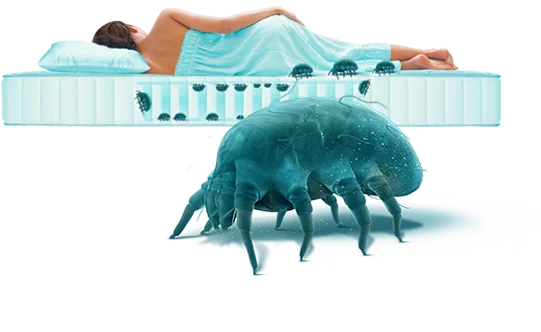
Why it is important to keep allergies from getting worse

Chronic allergies cause discomfort, poor-quality sleep and lower work and school performance in adults and children. But did you know that letting allergies go untreated for long periods of time may result in truly miserable and hard-to-control symptoms?
Chronic allergies can cause asthma
Untreated dust mite allergy is linked to the development of asthma. Indeed, if you or your child has a dust mite allergy and you do not treat it, you will have an increased risk of developing asthma.
Moreover, several medical studies have found a correlation between early exposure to dust mite allergens in babies and asthma symptoms later in childhood. If you or your child already suffers from asthma caused or exacerbated by dust mite allergy, failing to treat it properly may lead to an escalation of symptoms, uncontrolled breathing difficulties and even life-threatening asthma attacks.
The effects of allergy are not limited to a blocked and runny nose, burning eyes or asthma, which already make life difficult enough for allergic people. People with allergies are often particularly vulnerable to viral infections and easily fall sick when a virus circulates in their environment.
Sinuses that are continuously inflamed and full of mucus are a breeding ground for microbes. Instead of just aching sinuses and a runny nose, your poorly managed dust allergy could culminate in difficult-to-treat respiratory viral infections. So, on top of the burden of allergy symptoms, you could also be suffering from the effects of viral infections — a double penalty that can lead to a vicious cycle.

Constantly irritated skin opens the door to bacteria
Atopic dermatitis, recognised as red, flaky and itchy skin, is seen in sensitive people when they come in contact with dust mite allergens — a daily occurrence in most homes. Untreated dermatitis can lead to severely irritated skin, leading sufferers to scratch and pick at affected areas. Skin layers weakened by scratching, cracks and inflammation opens the door to bacterial skin infections, which only adds to the discomfort of allergic dermatitis.
Long-term suffering contributes to sleep disorders
It’s logical: sneezing, itchy breathing passages and nasal congestion can keep you up at night. But when you find yourself continuously blowing your nose and taking painkillers for your allergic sinus headaches every few hours, the quality of your sleep is sure to suffer on a long-term basis.
Lack of high-quality sleep causes daytime sleepiness, lack of focus and irritability, but it can also have impacts on your metabolism and cardiovascular system. Sleep problems are common in allergy sufferers and may lead to chronic insomnia.
Did you know that fatigue can also be a direct effect of an allergic reaction? This, combined with disrupted sleep, can result in problems with decision making, a higher risk of injury, greater chance of car accidents and lower performance at work or school.

Avoid long-term allergy symptoms by treating your home
It’s clear that chronic allergies cause more than just uncomfortable respiratory and skin symptoms. Dust mite allergy, when left untreated, can increase the risk of bacterial infection, severe asthma and even long-term sleep and mood disorders. The best way to avoid these risks is to avoid the source of allergens in the first place by removing dust mites from your home and preventing them from returning.
There are several steps you can take to limit the number of dust mites in your living space. Get the details from our experts.

Benjamin Tillier
Benjamin Tillier has more than 18 years of international experience in various sectors. He has been active in the healthcare industry since 2011. In regular contact with dust mites allergic people as well as professors and allergy specialists, he acquired an in-depth knowledge in this field.
Related articles



